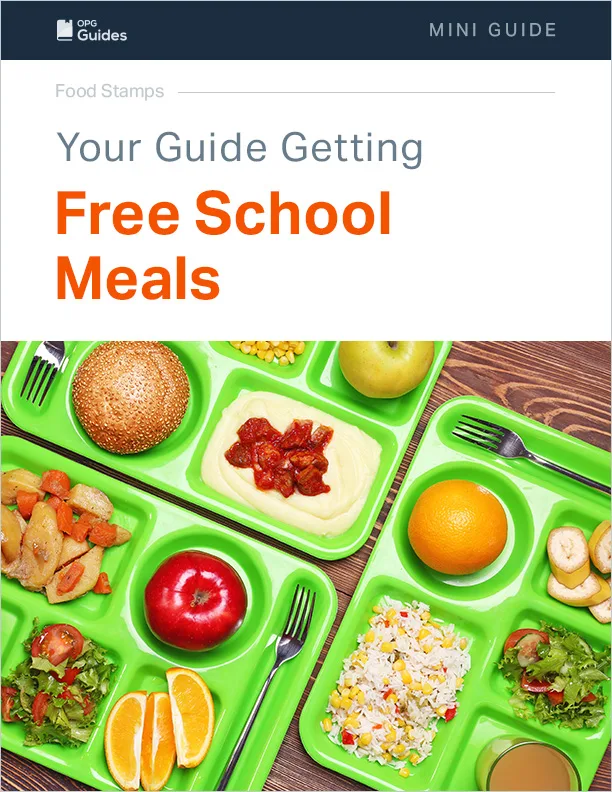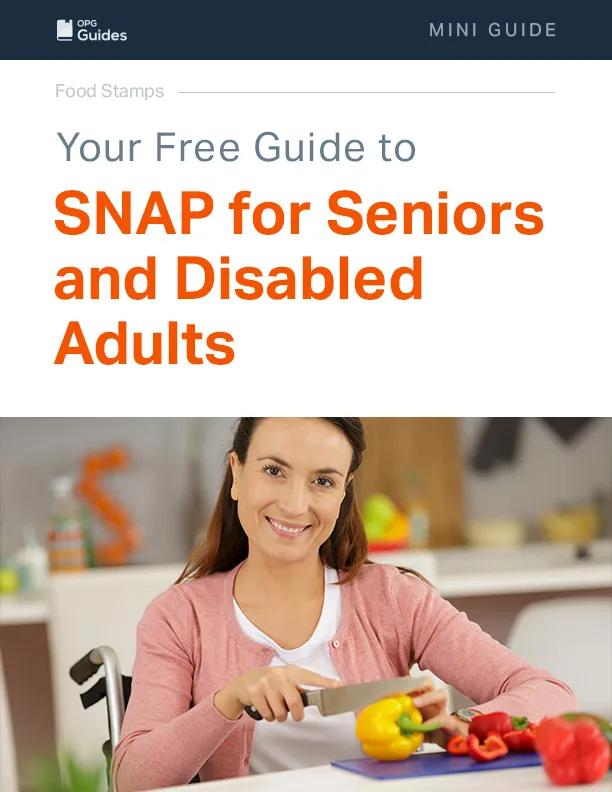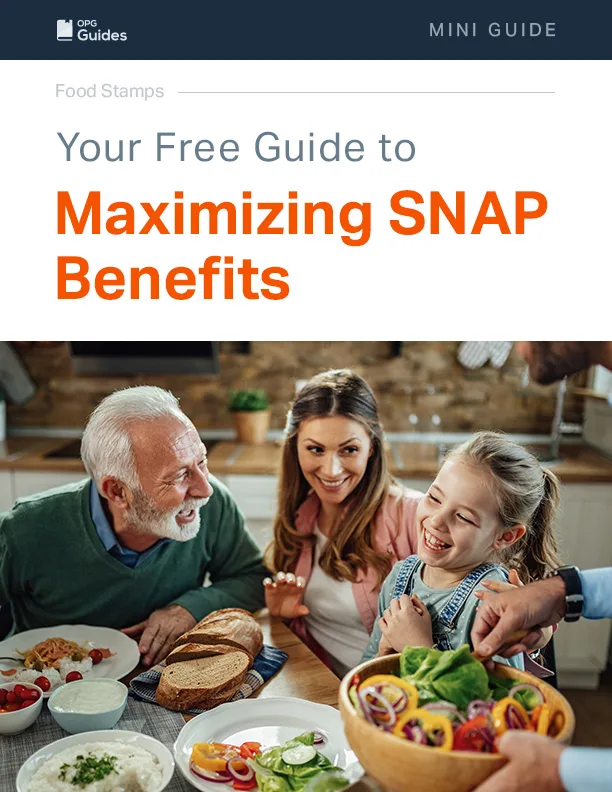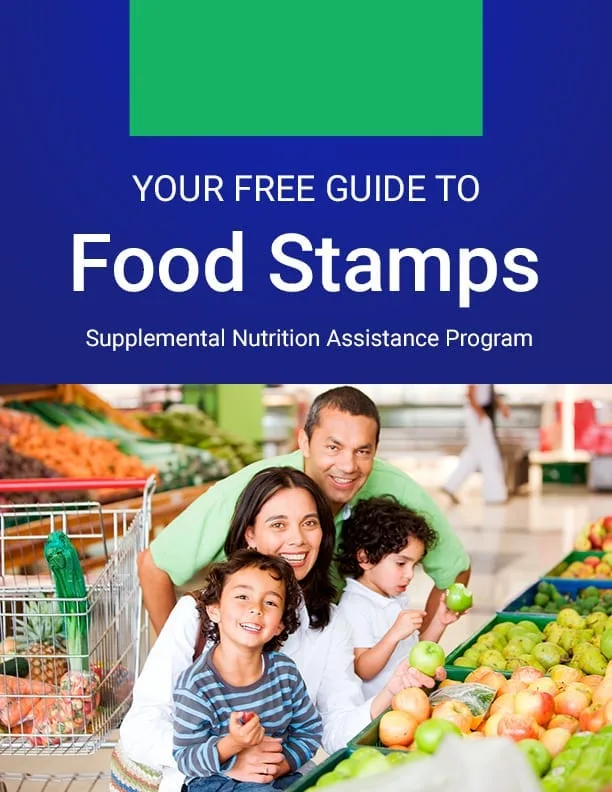Your Free Guide to Calculating Food Stamps Benefits
Your Free Guide to Calculating Food Stamps Benefits
We are privately owned and not affiliated with the government in any way or form.

SNAP News: November Payments to Resume, But Delayed
November 3, 2025 — A federal court has directed the Trump Administration to use contingency funds to maintain SNAP operations. This means while payments will resume, many states will face delays and issues, and families may only see about half of their normal benefit amount.
Before this, the U.S. Department of Agriculture (USDA) confirmed that SNAP benefits would not be distributed in November 2025 due to the ongoing federal government shutdown.
2025 Government Shutdown and Its Impact on SNAP Benefits: What You Need to Know
The federal government shutdown in October 2025 has disrupted many services, including the Supplemental Nutrition Assistance Program (SNAP), which provides crucial food support to millions of Americans. Initially, the U.S. Department of Agriculture (USDA) announced that regular monthly SNAP payments would be paused due to a lack of federal funding. This left millions of families uncertain about how they would manage their food budgets in the coming weeks.
USDA’s Response: Partial Benefits for November
Recent updates offer some relief, though it is far from full restoration of benefits. In a November 2025 court filing, the USDA confirmed it will access its $4.6 billion contingency fund to issue partial SNAP benefits for November. A full month of SNAP payments nationwide typically costs about $9 billion, which means most households will receive approximately 50% of their usual benefit this month.
The USDA also noted that states may experience technical delays or system issues while updating their payment systems to accommodate these reduced amounts. Depending on each state’s capacity and infrastructure, adjustments could take weeks or even months, and households should be prepared for variability in timing and amounts.
What SNAP Recipients Can Expect
- Reduced payments: Most households will see roughly half of their usual SNAP deposit for November.
- Potential delays: Processing may be slower as states update systems to reflect partial payments.
- Longer application timelines: Families submitting new applications or reporting recent changes in household income or size may experience extended wait times.
- Ongoing uncertainty: If the federal shutdown continues without new funding, benefits could be further reduced or even temporarily halted in the coming months.
Practical Steps for Managing SNAP Benefits
Even with reduced funds, there are ways households can stretch their resources and secure additional support:
- Monitor your EBT balance: Use your state’s online portal, mobile app, or the phone number on your card to track your available funds.
- Make strategic purchases: Focus on affordable, non-perishable foods that can last longer, and prioritize fresh produce when possible using supplemental programs.
- Access local food support: Food banks, community pantries, and meal programs can provide additional resources. Dial 2-1-1 or visit your state’s social services website to find nearby programs.
- Stay informed: Follow announcements from your state’s human services or agriculture department to keep up with payment updates or system changes.
- Keep applications current: SNAP applications and renewals are still being processed. Submitting paperwork on time is critical to avoid further delays.
- Adjust your budget temporarily: Consider reducing non-essential expenses and explore other assistance programs such as WIC, local church food drives, or community meal programs.
Resources and Support for Families
With over 42 million Americans relying on SNAP each month, the disruption caused by this shutdown is particularly challenging as the holiday season approaches. Several organizations provide food assistance and support:
- Feeding America: Offers a nationwide network of food banks and meal programs. Use their Thanksgiving Meal Finder to locate free meals or food boxes near you.
- AmpleHarvest.org: Connects households to local pantries and community gardens to access fresh produce and groceries.
- Salvation Army: Many branches offer free Thanksgiving dinners or food baskets. Check your local chapter for details.
- United Way 2-1-1: Dial 2-1-1 or visit 211.org to locate emergency food programs, pantries, and community meal options.
- Local faith and community centers: Churches, mosques, synagogues, and community centers often host free holiday meals, which can be found via 2-1-1 or Feeding America directories.
Introduction
This helpful guide can serve as an overview toward understanding and estimating SNAP benefits. SNAP is a vital program that helps ensure access to nutritious food for those in need.
The Supplemental Nutrition Assistance Program (SNAP) plays a crucial role in promoting food security and improving the overall well-being of low-income families and households. In this guide, we’ll break down the details of food stamp benefits calculation, shedding light on the factors that can influence eligibility and benefit amounts.
What is the Supplemental Nutrition Assistance Program (SNAP)?
Food stamps, also known as the Supplemental Nutrition Assistance Program (SNAP), provide vital assistance to qualifying individuals and families facing financial hardships. This program is designed to ensure access to nutritious food, promoting better health and well-being.
To qualify for food stamps, you generally need to meet income and resource requirements. Let’s delve into the calculation process and go over how food stamp benefit amounts are determined. Understanding these intricacies can empower you to make informed choices for yourself and your loved ones.
Contact Information by Location
How Are SNAP Benefits Calculated?

Calculating food stamp benefits involves assessing your household’s financial situation. A SNAP caseworker performs this calculation during your application process, and they’ll let you know your allotment amount when you’re approved for benefits.
However, understanding how food stamp benefits are calculated empowers you to plan and budget effectively while you wait for approval.
Here’s an overview of how the calculation works. The starting point is your household’s gross income, which includes wages, salary, and any other sources of income before taxes.
Then, deductions are applied to gross income to determine your household’s net income. The following deductions are permitted for food stamps, regardless of the state or U.S. territory you live in:
- 20% automatic deduction from earned income
- A standard deduction based on household size and location (see Factors That Affect Food Stamp Benefits below)
- A dependent care deduction based on total dependent care costs, including expenses for child and disabled adult care.
- An excess medical expense deduction for seniors and disabled persons for expenses over $35 each month.
- An excess shelter expense deduction for shelter expenses that are more than half of a household’s income. Households containing an elderly or disabled person have a deduction covering all shelter costs beyond half of the household’s income. Other households have a deduction cap based on household size and location (see Factors That Affect Food Stamp Benefits below). Shelter expenses include the cost of rent or mortgage payments with interest, home taxes, electricity, water, heat, and basic telephone service.
- State and territory-based deductions, such as deductions for child support payments or homeless households. You can contact your state or territory SNAP provider to learn more about available state and territory-based deductions. See the “Contact Information by Location” section to find your state or territory’s SNAP contact information.
Your household’s net income is the income that remains after all deductions have been applied. Finally, the SNAP program expects households to cover about 30 percent of their own food expenses.
To calculate your household’s food stamp allotment, you’ll need to multiply your household’s net monthly income by 0.3 and subtract that amount from your state or territory’s maximum monthly allotment for your household size. (See Maximum SNAP Benefit Allotments)
It’s important to note that your food stamp allotment will be calculated and, if necessary, adjusted whenever you renew eligibility or if there is a change to your household income, size, or other determining factors. Regular reassessment ensures that benefits remain aligned with your changing circumstances.
Factors That Affect Food Stamp Benefits
Standard Deductions
Find your standard deduction for your household size for October 1st, 2025 to September 30th, 2026 in the table below:
| Standard Deduction Amount (2025-2026) | |||||
| Area | Household Size (by Number of Members) | ||||
| 1-2 | 3 | 4 | 5 | 6+ | |
| 48 states + DC | $209 | $223 | $261 | $299 | |
| Alaska | $358 | $374 | |||
| Hawaii | $295 | $300 | $344 | ||
| Guam | $420 | $445 | $522 | $598 | |
| U.S. Virgin Islands | $185 | $223 | $261 | $299 | |
Excess Shelter Expense Deduction
Below find the maximum amounts of shelter and homeless shelter deductions for October 1st, 2025 to September 30th, 2026 by region:
| Regions | Max. shelter deductions | Max. homeless shelter deductions |
| 48 contiguous states + DC | $744 | $198.99 |
| Alaska | $1,189 | $198.99 |
| Hawaii | $1,003 | $198.99 |
| Guam | $873 | $198.99 |
| U.S. Virgin Islands | $586 | $198.99 |
Maximum SNAP Benefit Allotments
Your maximum food stamp benefit allotment is determined by household size and your state or territory. See the tables below to find your household’s maximum allotment for October 1st, 2025 to September 30th, 2026.
| SNAP Benefits by Household Size (48 States + D.C.) | |
| Household Size | Maximum Monthly Benefit (10/1/2025 – 9/30/2026) |
| 1 | $298 |
| 2 | $546 |
| 3 | $785 |
| 4 | $994 |
| 5 | $1,183 |
| 6 | $1,421 |
| 7 | $1,571 |
| 8 | $1,789 |
| Each additional person | $218 |
| SNAP Benefits by Household Size (Guam) | |
| Household Size | Maximum Monthly Benefit (10/1/2025 – 9/30/2026) |
| 1 | $439 |
| 2 | $806 |
| 3 | $1,157 |
| 4 | $1,465 |
| 5 | $1,743 |
| 6 | $2,095 |
| 7 | $2,315 |
| 8 | $2,637 |
| Each additional person | $322 |
| SNAP Benefits by Household Size (U.S. Virgin Islands) | |
| Household Size | Maximum Monthly Benefit (10/1/2025 – 9/30/2026) |
| 1 | $383 |
| 2 | $703 |
| 3 | $1,009 |
| 4 | $1,278 |
| 5 | $1,521 |
| 6 | $1,827 |
| 7 | $2,019 |
| 8 | $2,300 |
| Each additional person | $281 |
| SNAP Benefits by Household Size (Alaska) | |||
| Household Size | Maximum Monthly Benefit (10/1/2025 – 9/30/2026) | ||
| | Alaska Urban | Alaska Rural 1 | Alaska Rural 2 |
| 1 | $385 | $491 | $598 |
| 2 | $707 | $901 | $1,097 |
| 3 | $1,015 | $1,295 | $1,576 |
| 4 | $1,285 | $1,639 | $1,995 |
| 5 | $1,529 | $1,950 | $2,374 |
| 6 | $1,838 | $2,344 | $2,853 |
| 7 | $2,031 | $2,590 | $3,152 |
| 8 | $2,314 | $2,950 | $3,591 |
| Each additional person | $282 | $360 | $438 |
| SNAP Benefits by Household Size (Hawaii) | |
| Household Size | Maximum Monthly Benefit (10/1/2025 – 9/30/2026) |
| 1 | $506 |
| 2 | $929 |
| 3 | $1,334 |
| 4 | $1,689 |
| 5 | $2,010 |
| 6 | $2,415 |
| 7 | $2,668 |
| 8 | $3,040 |
| Each additional person | $371 |
Allotment information for American Samoa, Commonwealth Northern Mariana Islands (CNMI) and Puerto Rico are not available. Please contact your local office for more information.
Minimum SNAP Benefit Allotments
If you qualify for the food stamps program, your minimum SNAP benefit amount for October 1st, 2025 to September 30th, 2026 is as follows:
- 48 contiguous states & Washington, D.C.: $24
- Alaska: $31–$48 (depending on location)
- Guam: $35
- Hawaii: $41
- U.S. Virgin Islands: $31
Extra SNAP Benefits Through the Summer EBT Program
When school is out, SUN Bucks steps in to help families keep food on the table. Officially known as Summer EBT, this program gives families $120 in grocery benefits per eligible school-aged child to use during the summer months—when school meals aren’t available.
You can use SUN Bucks at authorized grocery stores and retailers, just like you would with SNAP. It’s available in the following participating states, Tribes, and U.S. territories, and goes by a few different names depending on where you live:
- Alabama
- American Samoa
- Arizona
- Arkansas
- California
- Cherokee Nation
- Chickasaw Nation
- Choctaw Nation of Oklahoma
- Colorado
- Connecticut
- Delaware
- District of Columbia
- Guam
- Hawaii
- Illinois
- Kansas
- Kentucky
- Louisiana
- Maine
- Maryland
- Massachusetts
- Michigan
- Minnesota
- Missouri
- Montana
- Muscogee Creek Nation
- Nebraska
- Nevada
- New Jersey
- New Mexico
- New York
- North Carolina
- North Dakota
- Northern Mariana Islands
- Ohio
- Oregon
- Otoe-Missouria Tribe
- Pennsylvania
- Utah
- Vermont
- Virginia
- Washington
- West Virginia
- Wisconsin
SUN Bucks can be added on top of other food programs like SNAP, WIC, and even free summer meal sites or grab-and-go SUN Meals in some rural areas.
Who Can Get SUN Bucks?
Your child may automatically get SUN Bucks if your household already receives:
- SNAP
- TANF
- FDPIR
- Or if your child gets free or reduced-price meals at a school that participates in the National School Lunch Program or School Breakfast Program.
If you’re not automatically enrolled, you may still qualify. You’ll need to meet income guidelines and apply through your state’s Summer EBT agency.
How SUN Bucks Are Sent
Once approved, benefits are either:
- Added to an existing SNAP EBT card
- Sent on a separate EBT card
- Or delivered in another way depending on how your state, Tribe, or territory runs the program
What Can SUN Bucks Buy?
You can use SUN Bucks to purchase the same kinds of foods you would purchase using SNAP benefits. So, things like fruits and vegetables, meat, poultry, fish, cereal, bread, and other snack foods are approved.
You can’t use SUN Bucks to buy hot or prepared foods. You also cannot use them to purchase cleaning supplies, household products, medicine, personal care products, or alcohol.

Applying for Food Stamps in Your State or Territory
Applying for food stamps is a straightforward process that varies slightly depending on your state or territory. Depending on your state or territory, you can apply online, by mail, by phone, or in person at your local SNAP office.
Many states offer online platforms that streamline the application, making it convenient and accessible. Whether you choose to submit your application digitally or through traditional methods, rest assured that assistance is within reach. Taking this step toward securing vital food stamp benefits is a positive stride toward improving your well-being and that of your family.





